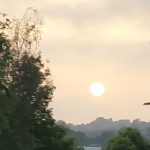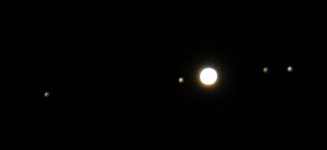Soldato
- Joined
- 16 Aug 2009
- Posts
- 8,075
It was seeing the moons that blew me away, as it's the first I've saw that.
Used to have a small telescape could just about make out a disc and the 4 main moons if you keep an eye on them they move from day to day if you're lucky you may get to see all 4 at once

Every time there's a "look tonight you won't see it again for umpteen years" event it's always bloody cloudy
It'll be around for more than just a night its usually visible for weeks it was visible again last night despite the haze and the streetlights which blotted everything else out as its so bright the absence of the moon at the moment helps as well
That would still put it in the sky
It may not be a part of the sky you can currently see, but it's always up there in the sky
In slightly more serious conversation though, I believe Saturn is also visible currently in the night sky from the UK, along with Jupiter and (I think?) Mercury?
Mercury is always bloomin' hard to see as its always so close to the sun its only ever visible at dusk or dawn and very low on the horizon I've only ever seen it once
Last edited:






